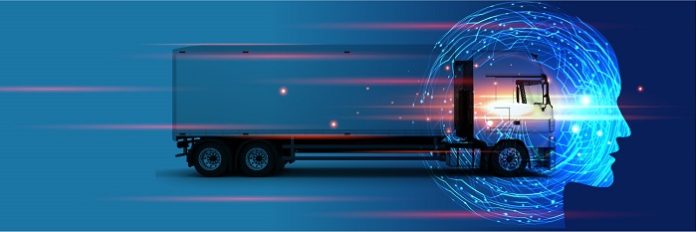Whether your company has a large fleet or only a few vehicles, fleet safety should always be a top priority. Safety initiatives not only save lives but also have a major impact on your bottom line. Every year, on-the-job highway crashes cost employers an average of $26,081 per crash, $66,119 per million vehicle miles of travel, and $78,418 per injury. To get a sense of how fast these numbers add up, let’s say your fleet has 1,000 crashes. Multiply $26,081 by 1,000—that’s $26,081,000 in losses.
Besides the obvious benefits of a safety program, fleets that integrate safety into every part of their business reap a range of intrinsic benefits, like improved accountability across every department, higher morale, better productivity, and increased driver retention. To help your fleet achieve these benefits while avoiding common pitfalls, here are four key elements of an effective fleet safety program.
In today’s digital world, telematics software is no longer a luxury but a necessity. Research shows that the market for fleet management systems is expected to grow from an estimated $14 million to $30 million in 2022. This shows that more transportation companies are taking fleet safety and tracking seriously—and you should too.
However, investing in fleet management software is a huge decision to make. In addition to getting value for your investment, you also want to know if telematics software is right for your company.
For more on fleet safety management systems, Durgadutt Nedungadi, Vice President, India and APAC at Netradyne was generous enough to have a conversation with us. Netradyne is in the business of transforming the transportation ecosystem through Computer Vision and in-depth data analysis to protect and empower fleets and drivers, creating safer roads for today. Their products and solutions transform and revolutionize fleet safety management. Excerpts:

ELE Times: Please shed some light on how Netradyne is providing efficient and effective assistance to make sure road safety and increase the standards?
Netradyne harnesses the power of Computer Vision and Edge Computing to revolutionize the modern-day transportation ecosystem. Since its inception, in 2015, Netradyne has been building a world-class team to deliver industry-leading fleet safety solutions. We’re the first commercial vehicle technology provider to combine Artificial Intelligence with video to detect, reason, and determine the causality of events, as we inform the way drivers of fleets interact with the road around them.
Netradyne collects and analyses more data points and meaningful information than any other fleet safety organization so customers can improve retention, increase profitability, enhance safety, and enable end-to-end transparency. Organizations trust Netradyne to build a positive, safe, and driver-focused culture, so they can take their business to the next level.
At Netradyne our team brings together edge computing on the device, AI, ML, and complex cloud tech to create end-to-end safety solutions. Our device – DriverI is a Vision-based ADAS / Outward Camera and Driver Monitoring System (DMS) / Inward Camera providing real-time feed while capturing and recording various matrix with regards to driver’s driving habits.
ELE Times: Please elaborate on the application of AI and edge computing in Netradyne’s Driveri.
Netradyne is deep technology, a safe driving company that is transforming the transportation ecosystem and fleet safety management practices around the world. Its proprietary, Made in India device ‘DriverI’ uses advanced AI, Edge Computing and Computer Vision technology to assess 21+ unsafe driving parameters such as drowsiness, texting, hard breaking etc. and generate alerts that notify drivers, prompt them to correct driving behaviour and reduce incidents of accidents. DriverI is used by leading companies across the globe to safeguard their fleets, drivers and reputation from fraudulent road accident claims and settle insurance disputes through verifiable, video backed evidence.
Recently, the company introduced Driver•iHubX, the latest generation of its Driver•i® accessory that enables customers to add up to four external cameras to their existing installation for a complete 360-degree view around the vehicle. In addition to the new hardware, the company also announced a host of enhancements and new features to its vision-based safety platform.
ELE Times: Besides AI, what other technologies can be incorporated to ensure a safer fleet from your standpoint?
The Fleet Management industry is a varied one, there is an almost endless list of add-ons that could be incorporated into the vehicles. Many innovative companies are producing credible technology and related devices today often incorporating both hardware and software plugged into those trucks from every angle.
Technology is finding ways to make it easier, quicker, more accurate, less taxing, safer or safeguarded, sometimes bringing sweeping industry change with it.
Real-time tracking of vehicles, shipments etc. has indisputably become a game-changer for this industry. Today, by deploying technologies such as AI, ML, IoT, and Data Analytics; Transport and Logistics Service Providers through dedicated customer portals help companies get access to milestone-based tracking, thereby enabling them to view the details of the shipment from one hub to another along with the exact date of delivery.
Some parts of the world require the fleet to know and report how many hours a specific driver drove his assigned vehicle. Technology has now become available which enables fleets to comply with this requirement.
Fuel Safety and optimization is another area where technology is playing its part to track both thefts, as well as consumption.
For some customers, detection of alcohol usage is also critical. Technology is today being developed to link some of the states of the art alcohol detection systems and take data from them into the overall fleet management system.
ELE Times: Please discuss your clientele in India and their feedback as well.
We have seen very rapid adoption amongst our Indian customers.
One of the World’s largest providers of retail fuel through their own petrol stations has mandated that their trucks will not ply the roads in case our device is not activated.
Precious cargo and its safety is a high priority. One of India’s leading cash management service providers has chosen us as their partner to deploy safety technologies on all their ATM replenishment vehicles.
Oil & Gas, Hazardous Chemical carriers, School buses, Employee transportation fleets – all of these are our target segments for India.
ELE Times: What innovations are under your pipeline?
Just to share a little more on our latest model of Driver•i’s’ features and functionality –
- *New* DriverStar Streak: Recognizes safe driving for those drivers who consistently drive within the company’s speeding policy thresholds for posted speeding and fleet-specified threshold speeding. Positive recognition plays a strong part in improving overall driving behaviour.
- Live Streaming: Enables an authorized user to view the outward or inward views of an installed Driver•i device in real-time. This functionality is helpful with specialized carriers and accident investigations. It also improves communication between the driver and fleet manager by allowing the driver to contact the manager for in-the-moment feedback and guidance on a situation as needed.
- Camera Obstruction Alert: Identifies events when the driver cannot be detected by the camera due to an object or material placed over the inward camera lens or when there is an issue with the device such as improper installation of the camera, the tilt of the camera, location of the camera or other hardware issue. Fleet managers can now easily identify obstruction events that are caused by a driver or passenger versus events that are the result of a hardware issue and manage them as appropriate.
We will continue to incorporate new unique features to our existing devices as per the requirements of our clientele across the globe.
Mayank Vashisht | Sub Editor | ELE Times

